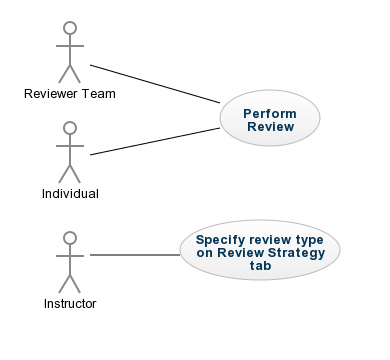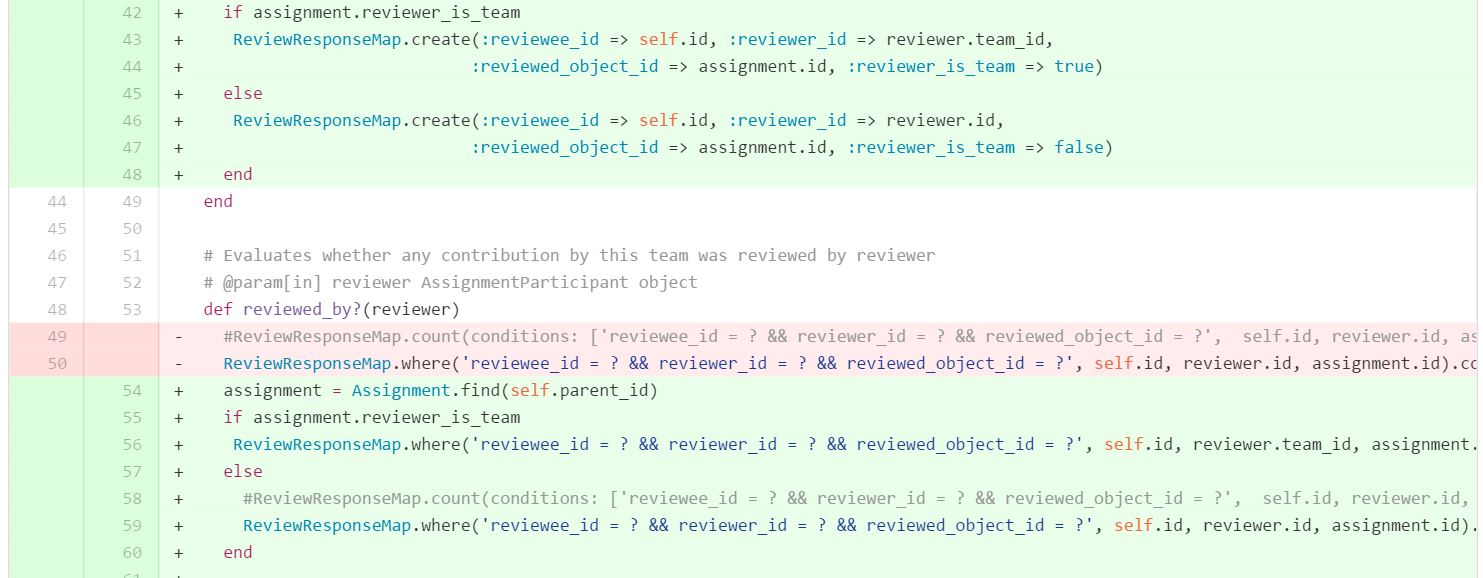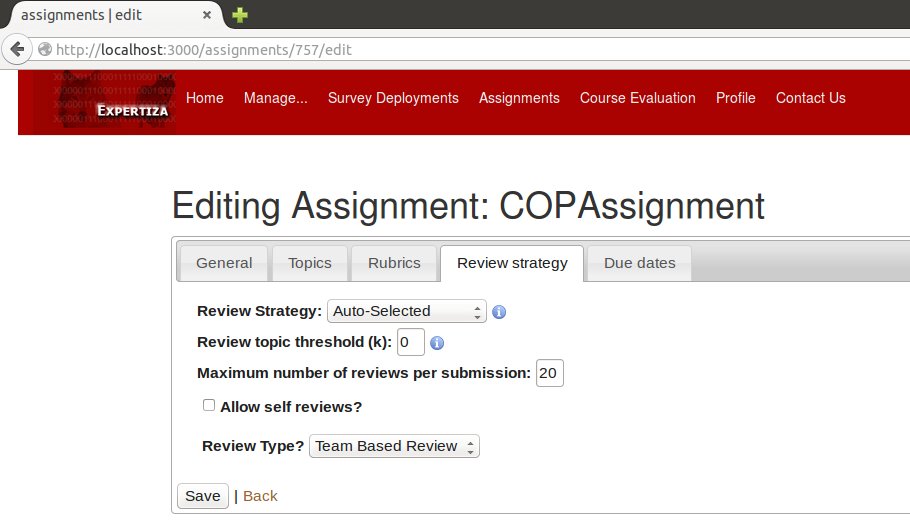CSC/ECE 517 Spring 2016 E1676 Role-based reviewing
Purpose
When a participant of a team reviewed an assignment, his/her review is independent of his teammate’s reviews. To allow teammates to discuss and review together, allowing teams to submit reviews for the team as a whole should be allowed ideally. We intend to do this in our project.
- Currently all reviews in Expertiza are done by individuals. This is true regardless of whether the assignment is done by individuals or teams .
- There are occasions when it's advantageous to review projects as a team .
- It helps foster discussion and thereby improves the process of learning.
Task Description
This project comprises of the following steps :
- Objects of ResponseMap record the information of who reviews whom. The field reviewee_id refers to the team who is being reviewed. The field reviewer_id refers to the individual/team performing the review. # We added a boolean field "reviewer_is_team" to identify if the review is being performed by a team or an individual.
- The review strategy is assignment specific and hence we have added a field reviewer_is_team to the assignments table as well
- For an Instructor to specify whether the review is a Team/Individual based review, we have provided a dropdown on the Review Strategy tab of assignment creation.
- If reviewer_is_team field is true the reviewer_id in the response_map is set to the corresponding team_id of the user
- Ensure that features such as "view my scores", or the "alternate view/heat map" continued working.
Design
Design Pattern
Model View Controller
In an MVC model, a software application is divided into three major components: Model, View and Controller.
Model - Keeps data, logic and relations between objects and the database. It also handles validations, associations and transactions.
View - Displays the data received from the controller in the user interface.
Controller - Accepts the client's input and converts it into action points for the model or view. Other responsibilities include querying models and organizing data in a structure that is displayed by the view.
Use Case Diagram
Name: Specify review type on Review Strategy tab.
Actor: Instructor.
Description: The instructor specifies whether this review is an individual review or a team based review on the Review Strategy tab.
Name: Perform Review.
Actor: Individual Student/Team.
Description: The individual/team will perform a review for the Assignment.
Database Design
1. The below fields have been modified in the response_maps table:
| Field | Data type |
|---|---|
| reviewer_id | int(11) |
| reviewer_is_team | boolean |
The description of the fields of the database for ResponseMap:
i. reviewer_id: Based on the reviewer_is_team flag in the assignments table , the assignment team or the participant id is added in this column.
ii. reviewer_is_team: If this field is ‘true’, the reviewer_id refers to the id of the “AssignmentTeam” to which the participant belongs. Else, it refers to the id of the “Participant” itself.
2. The below fields have been modified in the assignments table:
| Field | Data type |
|---|---|
| reviewer_is_team | boolean |
1. reviewer_is_team: - This field is set based on the discretion of the instructor who decides if the assignment is a to be reviewed individually or as a team.
Implementation
Below are the key files modified:
Controllers
- review_mapping_controller.rb:
1. We have added a check in the assign_reviewer_dynamically method that checks if the assignment is a team_reviewed assignment to fetch the respective row from the participants or the teams_users table
2. Also while redirecting to the student_review controller the participant_id or the team_id is passed based on the type of review
- response_controller:
1. Below is the get_reviewer_from_response_map method that returns the team or participant id based on the type of review . Also this value is passed forward to the respective controller we redirect to. The get_participant method returns the row from the participants table corresponding to the current user.
- student_review_controller:
1. Same logic as applied in the review mapping controller to obtain the reviewer.
Models
- assignment_team.rb:
1. A row is being created in the response_maps table depending on if it's a team or individual review. The same logic is being applied to check and retrieve the appropriate row form the response map.
- assignment.rb:
1. The logic to not allow reviewers to review their own work has been modified to include scenarios when it's a team based review.
Views
- assignments/edit/_review_report.html.erb:
1. Added the below drop down so that the instructor can select the review strategy for the assignment.
Testing Details
RSpec
RSpec is a testing framework for Rails, and is a Behavioral-Driven Development tool. It is a domain specific language(DSL). All the tests can be executed by rspec spec command, or can also be executed individually using the command "rspec spec/models/assignment_team_spec.rb".
We intend to write unit tests using RSpec for all the methods which we modified/created.
Factory Girl
Factory Girl is used for creating Assignment and Team objects to be used for testing. Factory Girl is a replacement for fixtures. Fixtures have to be updated whenever we change a data model whereas adding and removing fields is much easier in Factory Girl. Fixture definitions are global whereas Factories can be local, so isolated cases can be tested. Factories are defined to create objects for testing.
Running RSpec
$ rspec spec/models/assignment_team_spec.rb
Test Cases
1. If the instructor selects "Review by team", check if the review is done by a team member, not by participant.
2. If one teammate is working on a review, another teammate should not be able to edit it at the same time.








